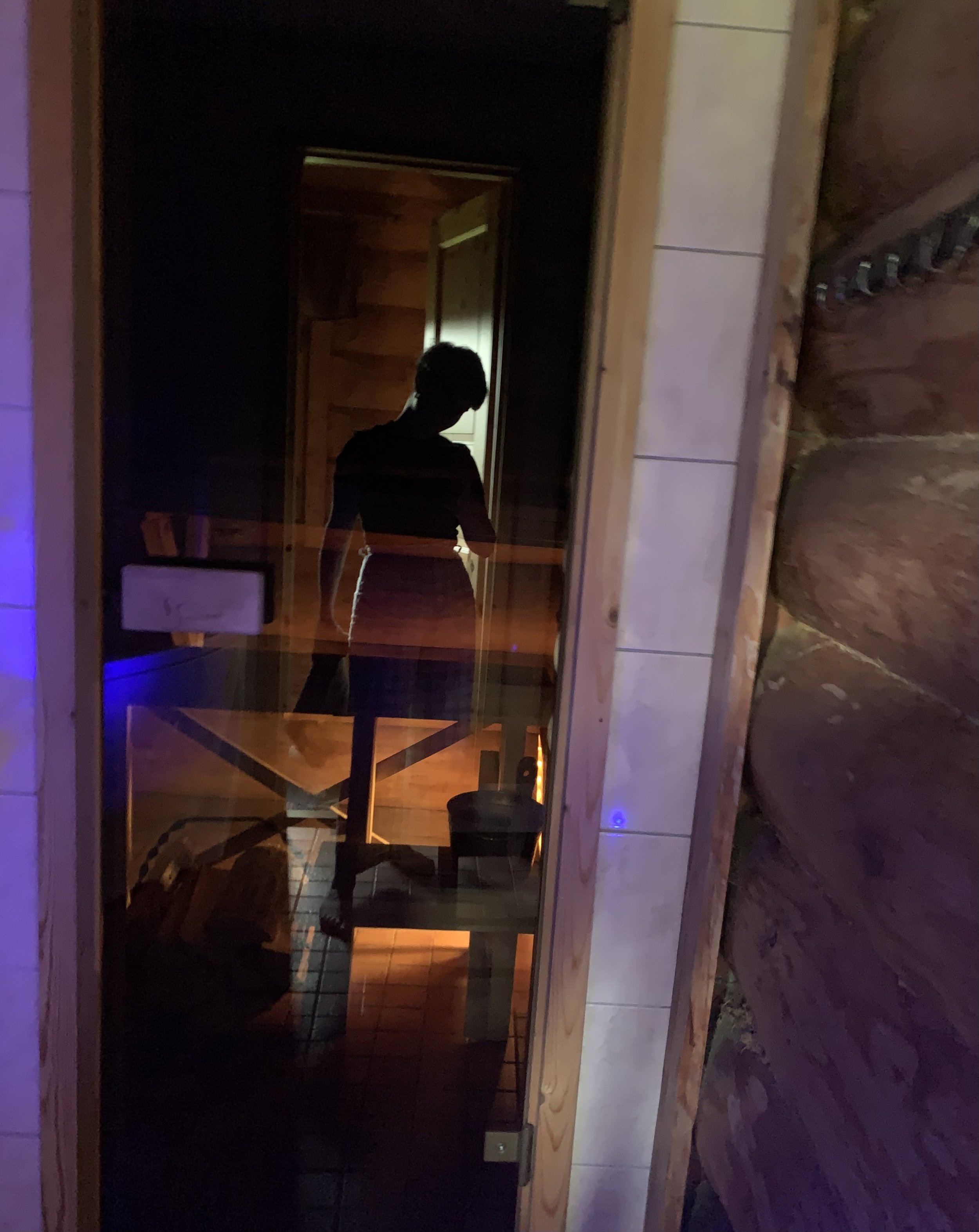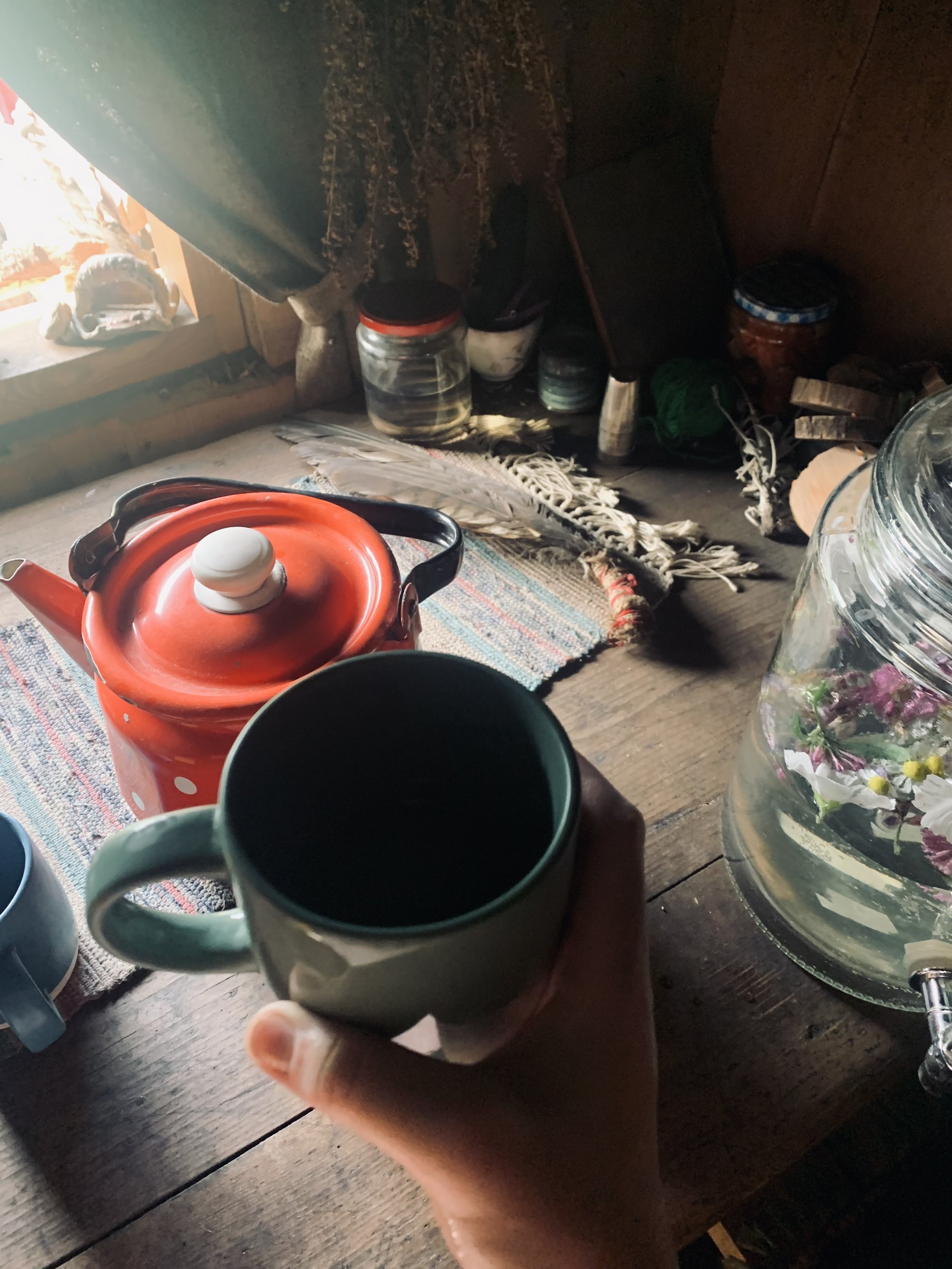Between June and July of 2022 during my summer break as a Massage Therapy student, I embarked on a journey across Latvia, Estonia, Finland and Sweden in search of traditional sauna rituals. As a second generation settler of Swedish background from Tkarón:to, Turtle Island (so-called Toronto, Canada), more than one practitioner suggested that perhaps I might be there to see something through for an ancestor. Whatever encouragement might have been going on, I had felt compelled to make the journey. I was unable to shake the disappointment and strangeness of my profession calling itself Swedish Massage Therapy without it being remotely Swedish. I wondered whether there might still be traditions of manual body work, hydrotherapy and sauna that hadn’t been stripped of context and marketed into oblivion like an IKEA troll doll.
I put my Social Anthropology degree to use, conducting research and following leads, and connected with people who worked with sauna in cooperative relationship with the land. Their work was embedded in the richness of particular ceremony, and expressed itself as part of a larger medicine system. After being accepted to study forest Pirts in Latvia, I booked a flight to Riga, and planned additional study opportunities across the Baltic and Nordic regions. I kept a detailed diary of my trip, and have included highlights in pictures and excerpts below.
Having returned home, and now an ocean away, I am making whisks of maple, birch and beech collected on a local ATV trail, recalling the percussion of bundled branches on my body, the taste of smoke, and peaceful release of blood cupping. I am filled with wonder at the diversity of beliefs and traditions that live in sauna, and am relieved that in spite of the wrecking ball of cultural imperialism, there are places where these folk medicine ways are stewarded and thriving.
Sauna has such powerful potential for återställa, restoring and making space within for shifts of being. It is no wonder that saunas have served as transitional spaces for birth, initiations and death since time immemorial. I anticipate that holding space for these realities within a professional community that wants so badly to be taken seriously will be challenging. How will I translate in terms of therapeutic benefit the wonder and poetic of a steam dance? The flow state and satisfaction of sauna whisk-making? The energetics of midsummer? The value of nakedness?
Through my reflections I want to emphasize how these folk traditions, or the people’s traditions, are not monolithic. They change shape over time, are of mixed heritage, survive oppressive regimes, and do not exist as a static, ancient thing. As a white person, no conversation about authenticity is complete without talking about the dangers of purity culture. While the desire for rootedness and community is beautiful, there are plenty of fascists and white supremacists claiming people of European ancestry in search of belonging. It is important to actively name and resist essentialist ideology when defining cultural experience and heritage. To search for authentic sauna is no exception, something that behooves the attention of the Nordic-inspired wellness industry.
For my part, I am excited to keep learning from sauna, tending the fires I have been invited to care for, reclaiming my ancestral folk medicine practices and ensuring there is room on the bench for others. Gratitude to Eero Kilpi for the warm welcome and for inviting me to write this article. I hope to meet many more of you and welcome continuing this conversation in the years to come. You can reach me by email at kate.t.hazell@gmail.com or on Instagram @steam_diary
Celebrating Jāņi (summer solstice) in Latvia, around a most aromatic fire fed with wildflowers, birch wood and oak leaves.
Fresh Pirts whisks are bound and stored in the shade. This morning we learned how the birch tree represents renewal, thriving and preparing the soil where other trees fear to root. Birch whisks have anti-inflammatory and antiseptic properties, and an aroma similar to wintergreen when used in Pirts.
Spireni bathhouse, now part of the Latvian Ethnographic Open Air Museum collection, was built in Nica parish in 1862. This bathhouse consists of three divisions: one small entry room, a dressing room, and a bathing chamber with a sweating shelf and boulder fireplace. Water in the tub was heated using hot stones. The spirit of this sauna felt very welcoming. I could have stayed there for a long time.
Arrived at my cabin in Haanja, Estonia, where I will be staying for a couple of nights. The woods close in as darkness falls and I can hear an owl nearby. Such a pleasure to have my own sauna to fire up and the knowledge to tend it.
Today I walked a country road to Mooska farm to learn about Võro smoke sauna culture from one of its guardians. We talked about many things as she prepared the environment for her next guests, including how she works with people at every stage of life in the sauna, and those who are dying, as was done traditionally. Asked what she would like people to know about sauna rituals, she told me: Experiencing a ritual is not like consuming a meal seasoned by someone else. You must understand that the ritual is within you.
Photo credit to @kupparihanna
Wet (blood) cupping therapy performed on my upper back by a folk medicine practitioner in Finland. Post treatment I feel deeply relaxed, with progress made on reducing some particularly stubborn muscle resting tension. Wet cupping may not be for everyone, and it is in some cases contraindicated. For me it was a very positive experience.
One day to spend in Malmö and there happened to be a Queer Kallis event at the open-air bath, Ribersborg Kallbadhus. Nothing quite like stepping out of a friendly sauna and plunging naked into the sea!
The practitioner and I are undressed and talking quietly, seated in the antechamber to the 100 year-old smoke sauna that belonged to her grandfather. We drink tea between immersions in the sauna. She instructs me to take of the salt and to rub it into my skin, starting with my toes. She does this too. As we work, we repeat: I release from within me and outside of me, that which does not serve me.








